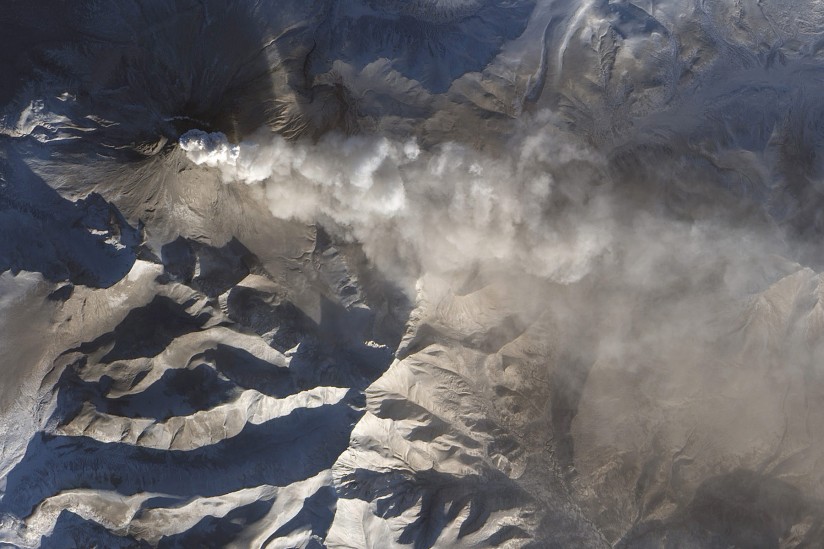-
Ancient volcanoes could be key to predicting impact of climate change
April 26, 2016 / Written by: Andrew Good
Researchers think emissions from volcanos, such as the one seen here, may have led to a dramatic rise in CO2 leading to a mass extinction 200 million years ago. (Photo/NASA Earth Observatory)Just over 200 million years ago, long before the demise of the dinosaurs, a cataclysm killed off a significant chunk of the planet’s animal life. The leading theory implicates massive volcanic eruptions, triggered when the supercontinent of Pangea was ripped apart into separate continents.
A new study co-authored by USC researchers, including Yadira Ibarra, NAI/APS Lewis and Clark Fund for Exploration and Field Research in Astrobiology awardee, strengthens evidence for that theory and has wider implications for how rapid climate change can affect life on Earth. Along with lava flows, the volcanic eruptions released massive amounts of the greenhouse gas carbon dioxide, creating havoc in the ecosystem.
The study, published April 6 in Nature Communications, charts the sharp escalation of the element mercury in samples of rock preserved from the Triassic-Jurassic extinction event. It isn’t the ordinary mercury you’d find on the surface of the planet: Isotopic data suggests it can be traced to the eruptions.
Read the full USC News article here.
Source: [USC News]
- The NASA Astrobiology Institute Concludes Its 20-year Tenure
- Global Geomorphologic Map of Titan
- Molecular Cousins Discovered on Titan
- Interdisciplinary Consortia for Astrobiology Research (ICAR)
- The NASA Astrobiology Science Forum Talks Now on YouTube
- The NASA Astrobiology Science Forum: The Origin, Evolution, Distribution and Future of Astrobiology
- Alternative Earths
- Drilling for Rock-Powered Life
- Imagining a Living Universe
- Workshops Without Walls: Astrovirology